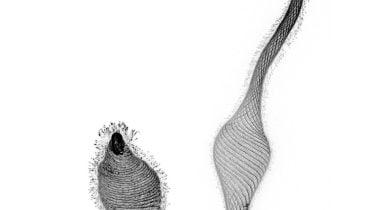A side-by-side comparison of Lacrymaria olor , a remarkable ciliate with its “neck” extended and retracted. Researchers discovered origami-like folds make this morphing possible where microtubules define folding pleats. Credit: Prakash Lab Stanford scientists have unveiled “lacrygami,” a phenomenon where Lacrymaria olor extends its structure dramatically, influenced by its cytoskeletal design, promising advances in microscopic technology.
“There are some things in life you can watch and then never unwatch,” said Manu Prakash, associate professor of bioengineering at Stanford University, calling up a video of his latest fascination, the single-cell organism Lacrymaria olor , a free-living protist he stumbled upon playing with his paper Foldscope . “It’s ..

. just ..
. it’s mesmerizing.” “From the minute Manu showed it to me, I have just been transfixed by this cell,” said Eliott Flaum, a graduate student in the “curiosity-driven” Prakash Lab.
Prakash and Flaum spent the last seven years studying Lacrymaria olor’s every move and recently published a paper on their work in the journal Science . Discovering Cellular Dynamics “The first time I came back with a fluorescence micrograph, it was just breathtaking,” Flaum said. “That image is in the paper.
” The video Prakash queued up reveals why this organism is much more than a pretty picture: a single teardrop-shaped cell swims in a droplet of pond water. In an instant, a long, thin “neck” pro.
















